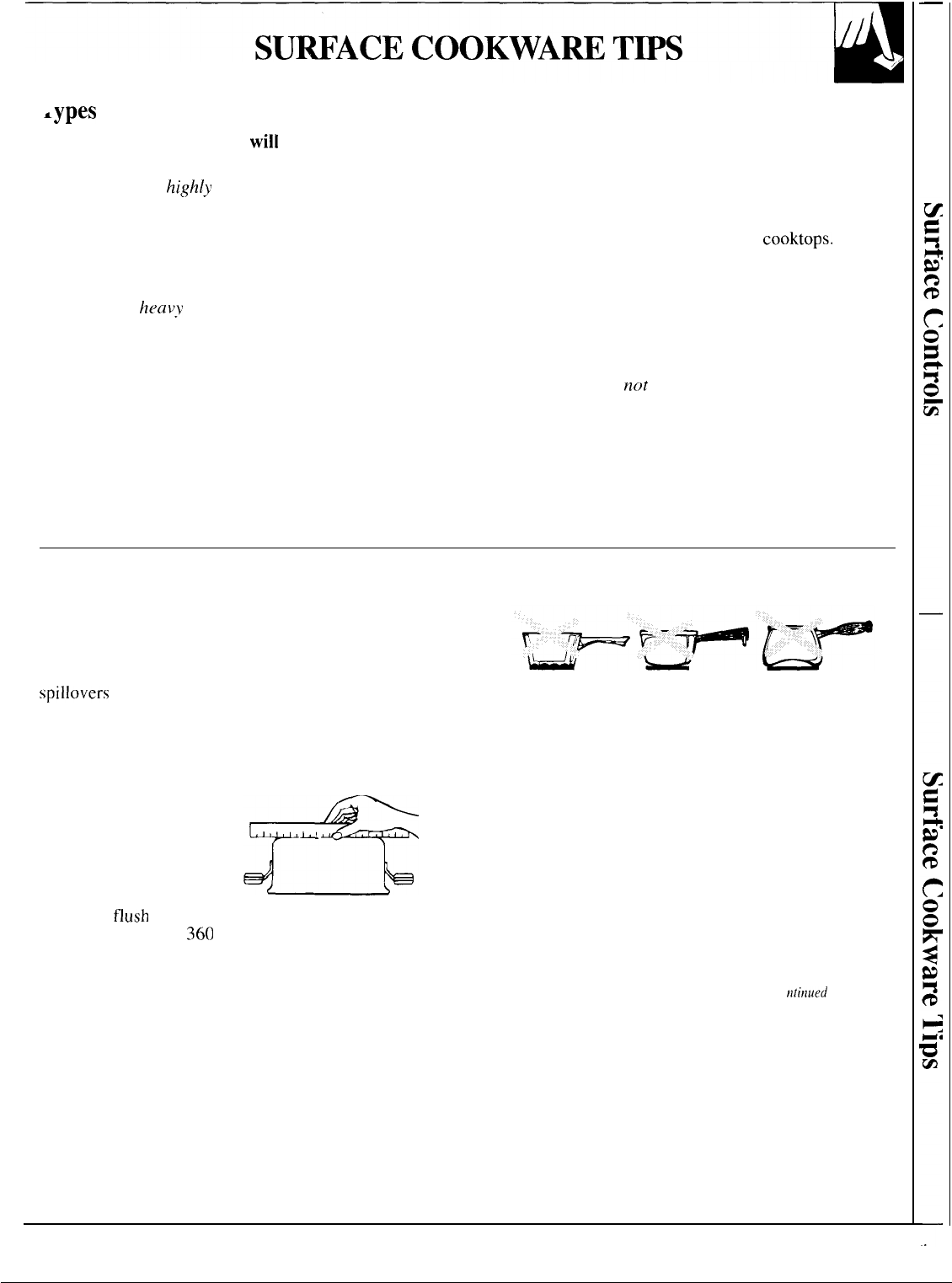
.ypes
of Cookware
The following information
will
help you choose
cookware which will give good performance.
Stainless Steel: highly recommended
Especially good with a sandwich clad bottom. The
sandwich bottom combines the benefits of stainless
steel (appearance, durability and stability) with the
advantages of aluminum or copper (heat conduction,
even heat distribution).
Aluminum: heavy weight recommended
Good conductivity. Aluminum residues sometimes
appear as scratches on the cooktop, but can be
removed if cleaned immediately. Because of its
low melting point, thin weight aluminum should not
be used.
Copper Bottom:
Good performance, but copper may leave residues
which can appear as scratches.
The residues can be
removed, as long as the cooktop is cleaned
immediately. However, do not let these pots boil dry.
Overheated metal can bond to glass
cooktops.
An overheated copper pot will leave a residue that
will permanently stain the cooktop.
Porcelain/enamel:
Good performance only with a thick, flat, smooth
bottom. Avoid boiling dry, as porcelain can melt and
fuse to the. surface.
Glass-ceramic: not recommended
Poor performance. May scratch surface. Usable, but
not recommended.
Stoneware: not recommended
Poor performance. Will scratch the surface.
Cast Iron: not recommended
Poor performance. Will scratch the surface.
How to Check Pan Performance
se of correct cookware can affect the cooking
performance and cleaning of your cooktop.
The correct cookware reduces the temperature of
the cooktop surface and minimizes the chance of
spillovers
burning onto the cooktop.
You must use pans with perfectly flat bottoms.
Some pans may have curved or rounded bottoms or
may be warped. If you are unsure of the flatness of
your pans you may do this quick test.
Turn your pan upside
down on the countertop,
place a ruler flat against
the pan surface. The
bottom of the pan and the
straight edge of
-
the ruler
=
u
should fit
ffush
against each other all the way across.
Turn the ruler a full
360
degrees, checking for any
space between the ruler and the bottom of the pan.
Pans with rounded, curved, ridged or warped bottoms
are not recommended.
Another simple test to determine even heat distribution
across the cookware bottom is to put one inch of water
in the pan. Bring the water to a boil and observe the
location of bubbles as the water starts to boil. Good
flat cookware will have an even distribution of bubbles
over the bottom surface area of the pan. Bubbles
localized in only a portion of the bottom indicate
uneven contact of the pan to the surface unit, uneven
heat transfer or an unsuitable pan.
Use pans that match the diameter of the surface
unit. Cooking performance will not be as good if
the cookware is either smaller or larger than the
surface unit.
(co
fltinued
next page)
11
I


















